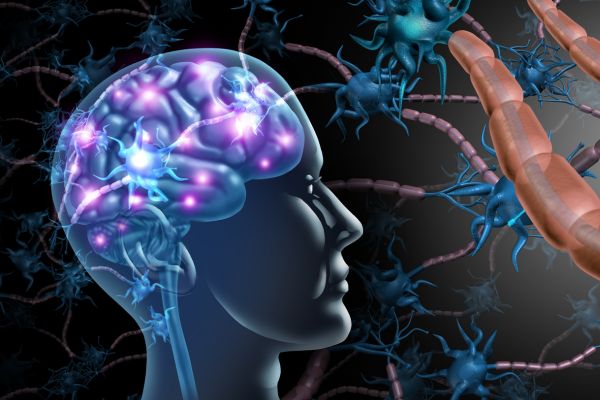Certain ailments, especially tumors, can creep in slowly without your notice, only until symptoms start to weigh down on you. It could be nagging headaches, nothing killer, just a persistent low hum that you can’t get rid of. Or maybe your vision starts blurring at the edges, or you find yourself peeing more than usual. These are but a sneak peek into craniopharyngioma symptoms.
Craniopharyngioma is a nonmalignant tumor that develops in the brain, mostly in the same region where the pituitary gland lies. This can throw your hormones into chaos and can mess with growth in children. It’s more common in children and people over 50 years, but really, it can hit anyone. Strangely, the symptoms build slowly, sometimes taking years, then they start demanding attention.
Are you wondering whether that fatigue, blurry vision, or mood swings could mean something bigger? We’ll break down the early craniopharyngioma symptoms in adults and kids, how doctors spot it, and the warning signs you shouldn’t ignore. Because knowledge here could change everything.
Early Symptoms That Often Go Unnoticed
Here’s the thing about craniopharyngioma symptoms: they don’t usually barge in like a storm. They sneak in quietly, one odd change at a time. You might brush it off as stress, bad sleep, or just “getting older.” But these tiny clues can be the body’s early warning system.
1. Headaches
One of the first red flags? Persistent headaches. Not the kind that drops you to your knees, but the dull, nagging ones that keep showing up, especially in the morning. That pressure builds because the tumor sits deep near the brain’s center, where even a small mass can make a big difference.

2. Vision Problems
Then there’s vision trouble; blurry edges, tunnel vision, or a sense that the world looks dimmer. This happens when the tumor presses on the optic chiasm, the bundle of nerves responsible for your sight.
3. Fatigue, mood swings, and weight changes
Next, these three symptoms creep in. These changes are a result of the body experiencing hormone chaos, that is, a reduction in hormone levels. As a craniopharyngioma enlarges, it applies pressure on the pituitary gland, and this can throw off everything, from metabolism to energy levels.
The result is feeling tired almost every other minute, you may crave naps, or sometimes bulk up some weight, even with a small calorie intake.
Childhood Craniopharyngioma Symptoms
Now, in kids, the symptoms take a different turn. Childhood craniopharyngioma symptoms often show up as slow growth, delayed puberty, or constant thirst and urination. Parents might think it’s just a growth spurt gone weird or an overactive bladder. But it’s really the tumor tampering with the hypothalamus and pituitary glands.
The symptoms can manifest in different ways, depending on the location of the tumor in the brain. Some of these symptoms can include:
- Persistent headaches, especially morning headaches or those that varnish after vomiting.
- Nausea, vomiting.
- Trouble walking due to loss of balance
- Change in energy levels and abnormal sleepiness
- Changes in mood, personality, or behavior.
- Constant urination and thirst.
- Slow growth or short stature
- Hearing loss
- Weight gain
- Late or early puberty.
In some cases, kids may start struggling in school because their concentration has dipped and their memories falter. Another big clue is changes in vision; they may bump into things or say that classroom boards are fuzzy. And since childhood craniopharyngioma symptoms come on so slowly, correct diagnosis can take longer.
These symptoms can also occur due to other health problems apart from craniopharyngioma. The only way to tell if it’s a brain tumor for sure is to get help from a doctor. Some of these symptoms may go on for months or years even after treatment. As such, follow-up care is vital to ensure that any recurrence is detected even after completing treatment.
Craniopharyngioma Symptoms in Adults
The symptoms in adults can take a slightly different pattern than in children. In most cases, they tend to overlap with hormonal problems. The symptoms take time to manifest, which is why they are sometimes easily confused with aging or stress. But the body has a way of whispering when something’s not right before it actually screams.
Here are some of the craniopharyngioma symptoms to watch out for and why each one matters:
Persistent Headaches
These are not like the usual headaches you experience from time to time. Instead, they feel somewhat dull from afar, but often worsen when you wake up or when bending over. What’s the cause? The irritation or increasing pressure from the enlarging tumor. This is the body’s way of sending the signal that something’s amiss and should be given attention.
Vision Problems
This is one of the most common clues of craniopharyngioma. It often involves blurry or double vision, and sometimes narrowing of side vision, like tunnel vision. Vision problems occur because the growing tumor is putting pressure on the optic nerves, the delicate pathways between the brain and the eyes. It’s unsettling, but it’s also a major red flag to catch early.

Hormonal Imbalances
The tumor develops right next to where the pituitary gland sits. So, when the tumor enlarges and starts poking at the gland, it can cause the hormone secretion to go out of balance. The result of this is noticeable weight gain, fatigue, mood swings, and sometimes irregular menstruation.
It can be confusing because all these changes appear unrelated, but together, they can paint a telling picture.
Memory or Behavior Changes
Other craniopharyngioma symptoms in adults involve changes in behavior or memory. Some people may become forgetful, struggle to focus, and become irritable. Loved ones may start to notice these changes long before even the patient does. It can be frustrating and scary, but it’s not your fault. The tumor can alter how your brain communicates with the rest of your body.
Nausea and Vomiting
This often happens when pressure inside the skull increases. You might wake up queasy or get sick without any clear reason. The experience can be so unpleasant; unfortunately, many people quickly dismiss it as stomach upset. However, you need to watch out for other symptoms too because they could be another piece of the puzzle to help your doctor narrow down the cause.
Fatigue and Weakness
Most patients experience general tiredness even without doing any chores. And no amount of rest can ease the fatigue. This is partly due to the disruption of hormones as well as the mental toll of having to deal with other mysterious symptoms. It’s the type of exhaustion that affects literally everything else, and recognizing it is crucial to getting proper help.

Diabetes Insipidus
Some people can even develop diabetes insipidus, the type that causes extreme thirst all the time and a constant urge to urinate. This shouldn’t be confused with the other type of diabetes that is more common and affects blood sugar.
Cognitive Changes
Other craniopharyngioma symptoms include cognitive changes, where people might feel “foggy.” They may become forgetful or emotionally flat. At first, it’s subtle, but with time, it becomes more evident, with friends and family noticing the personality shift first. This can be characterized by mood swings, frustration, or detachment. The cause of these changes can be traced back to the pressure exerted by the growing tumor on surrounding brain structures that regulate focus and emotions.
Craniopharyngioma Diagnosis and Testing
Diagnosis of craniopharyngioma takes time because the symptoms manifest slowly. It’s similar to putting together a puzzle; every scan, every test, every question is another piece that joins together to form the bigger picture.
Studying the symptoms
Doctors often start the diagnosis by listening to your symptoms. Vision changes, headaches, unexplained fatigue… none of it is too small to mention. After looking at these symptoms, they move to more concrete steps. Through a thorough neurological exam, the doctor checks how well your nerves and reflexes are working.
Eye examination
Also, an eye exam can be done to reveal pressure on the optic nerves, one of the earliest signs that something near the pituitary region might be off.
Hormone testing
Since craniopharyngioma can mess with the pituitary gland, doctors measure the hormone levels through simple blood work. Abnormal results can indicate the tumor’s effects on the body, whether it’s too little cortisol, excess prolactin, or other hormonal changes that don’t add up.
Imaging
If, after the blood test and things don’t seem clear, the doctor takes the diagnosis to another level through imaging. This starts with an MRI scan, ideal for spotting tumors. It paints a vivid picture of the brain’s soft tissues, which is crucial in identifying craniopharyngioma.
In some cases, if the MRI scan results aren’t clear, the doctor may order a CT scan to help fill the gaps, especially when looking for calcifications common in craniopharyngioma. At times, a biopsy may be needed, where a sample of the tumor is taken and observed under a microscope to confirm the diagnosis. This isn’t always necessary, but when it is, it often gives the exact answer the doctor is looking for.
Through it all, the testing process can feel like a marathon. However, each test brings you closer to understanding what’s really happening.
When to Get Checked
The truth is, you don’t have to worry about every headache or bout of fatigue. However, if you notice the pattern is persistent, and soon other craniopharyngioma symptoms start creeping in (vision problems, odd weight changes, excessive thirst), don’t hesitate to go for a scan. With early imaging tests such as an MRI or CT scan, it’s possible to identify craniopharyngioma before it grows to cause hard-to-treat problems.
In most cases, doctors combine hormone testing with imaging. Hormone testing helps look for changes in levels of cortisol, thyroid, or growth hormone. The diagnosis process isn’t a one-size-fits-all process, and sometimes requires a bit of patience. Once identified, treatment can be a mix of surgery, radiation, and hormone therapy.
Conclusion
Craniopharyngiomas are a rare brain tumor; however, their early signs matter a lot. Identifying craniopharyngioma symptoms early enough, in both children and adults, can make a big difference in managing recovery and lifelong complications.
So, if your body is whispering some of the symptoms highlighted above, it could be an indication that something’s off. You shouldn’t ignore it. Sometimes those tiny whispers are worth listening to, even though they can creep in as harmless headaches, tiredness, or vision problems.
Whether it’s childhood craniopharyngioma symptoms or subtle changes in adults, identifying them early enough makes a big difference in treatment. Awareness, persistence, and good medical follow-up can turn confusion into clarity and worry into action.

